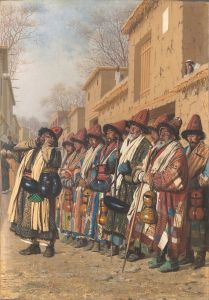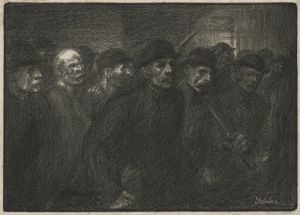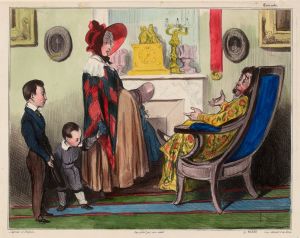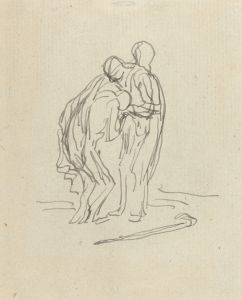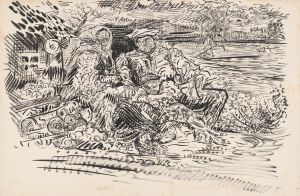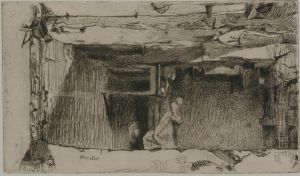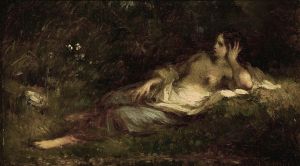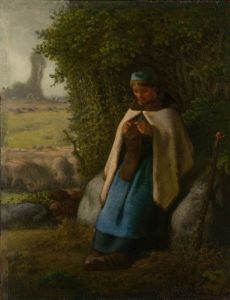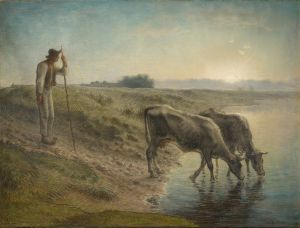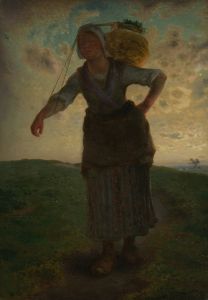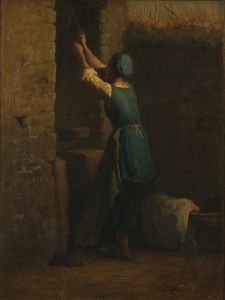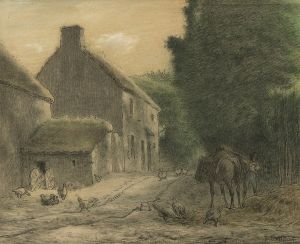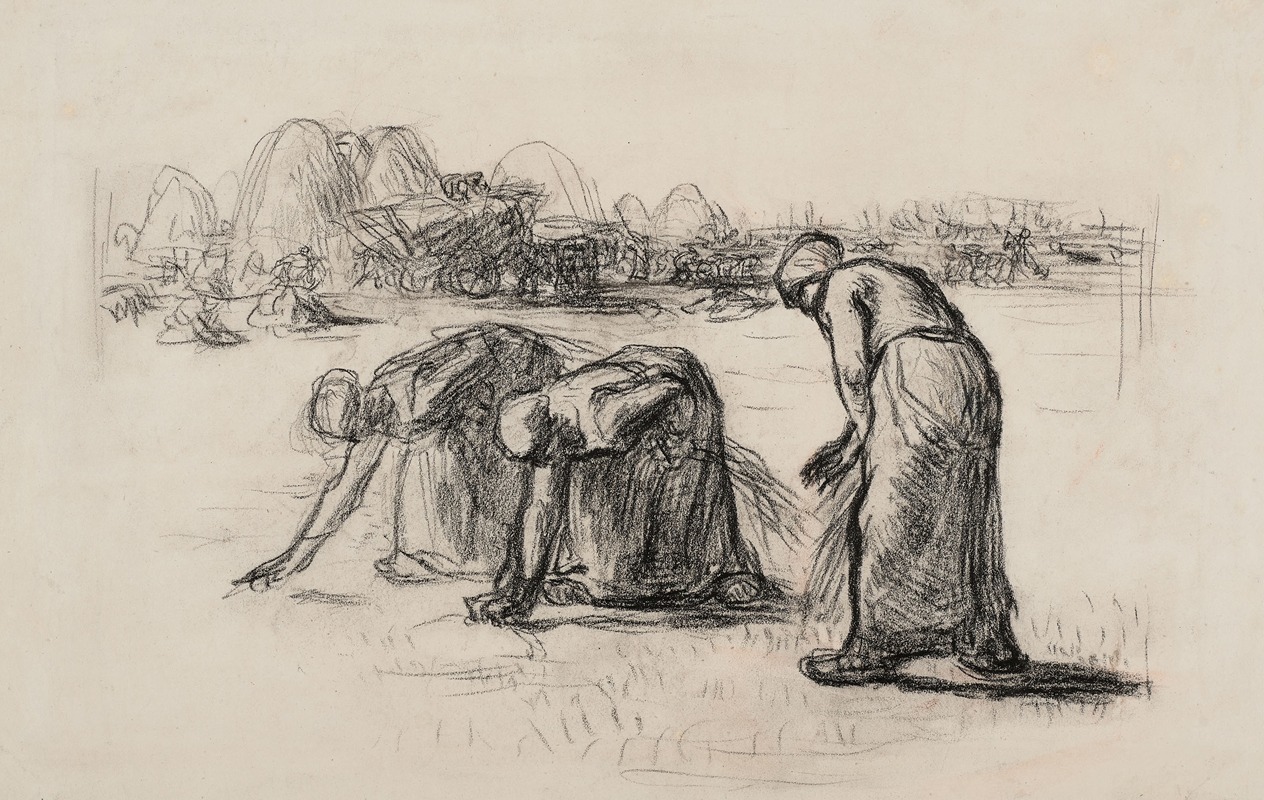
Étude pour les glaneuses
A hand-painted replica of Jean-François Millet’s masterpiece Étude pour les glaneuses, meticulously crafted by professional artists to capture the true essence of the original. Each piece is created with museum-quality canvas and rare mineral pigments, carefully painted by experienced artists with delicate brushstrokes and rich, layered colors to perfectly recreate the texture of the original artwork. Unlike machine-printed reproductions, this hand-painted version brings the painting to life, infused with the artist’s emotions and skill in every stroke. Whether for personal collection or home decoration, it instantly elevates the artistic atmosphere of any space.
Jean-François Millet's Étude pour les glaneuses (Study for The Gleaners) is a preparatory work created by the French artist in the mid-19th century. Millet, a prominent figure of the Barbizon School, is best known for his depictions of rural life and labor, and this study serves as an important precursor to his iconic painting The Gleaners (1857). The study reflects Millet's focus on the dignity and hardship of peasant life, a recurring theme in his oeuvre.
The artwork portrays three women gleaning in a field, a practice where the poor collect leftover crops after the harvest. This activity was a common sight in rural France during Millet's time and symbolized both poverty and resilience. The composition of the study closely resembles that of the final painting, with the three figures bent over in labor, their postures emphasizing the physical strain of their work. However, as a preparatory piece, the study is less detailed and more focused on exploring the arrangement and movement of the figures.
Millet's choice to depict gleaners was significant in the context of 19th-century France. At the time, industrialization and urbanization were transforming society, and rural laborers were often marginalized. By portraying these women with a sense of solemnity and respect, Millet challenged the romanticized views of rural life and highlighted the realities of poverty. His work was both praised and criticized for its social commentary, with some contemporaries viewing it as a sympathetic portrayal of the rural poor, while others saw it as politically provocative.
The medium of Étude pour les glaneuses is believed to be charcoal or pencil on paper, though specific details about the materials and dimensions of the study are not widely documented. As a preparatory work, it was likely created in Millet's studio or during his observations of rural life in Barbizon, where he lived and worked for much of his career.
Today, Étude pour les glaneuses is valued for its insight into Millet's creative process and his commitment to depicting the lives of ordinary people. While the final painting The Gleaners is housed in the Musée d'Orsay in Paris, the location of this specific study may vary, as it could be part of a private collection or held in a museum archive. The study remains an important example of Millet's dedication to realism and his ability to convey profound meaning through simple, everyday scenes.





